Shipping country and language
Your country of residence may be:
Your country of residence is:
For a better user experience on our website, you can select:
Your shipping country:
Andorra
Austria
Belgium
Bulgaria
Canada
Chile
Croatia
Cyprus
Czechia
Denmark
Estonia
Finland
France
Germany
Greece
Hungary
Iceland
Ireland
Italy
Latvia
Lithuania
Luxembourg
Malta
Monaco
Netherlands
Poland
Portugal
Romania
Slovakia
Slovenia
Spain
Sweden
Switzerland
United Kingdom
We only deliver seed and bulb products to your country. If you add other products to your basket, they cannot be shipped.
Language:
French
German
Spanish
English
My Account
Hello
My wish lists
Plantfit
Log in / Register
Existing customer?
New customer?
Create an account to track your orders, access our customer service and, if you wish, make the most of our upcoming offers.
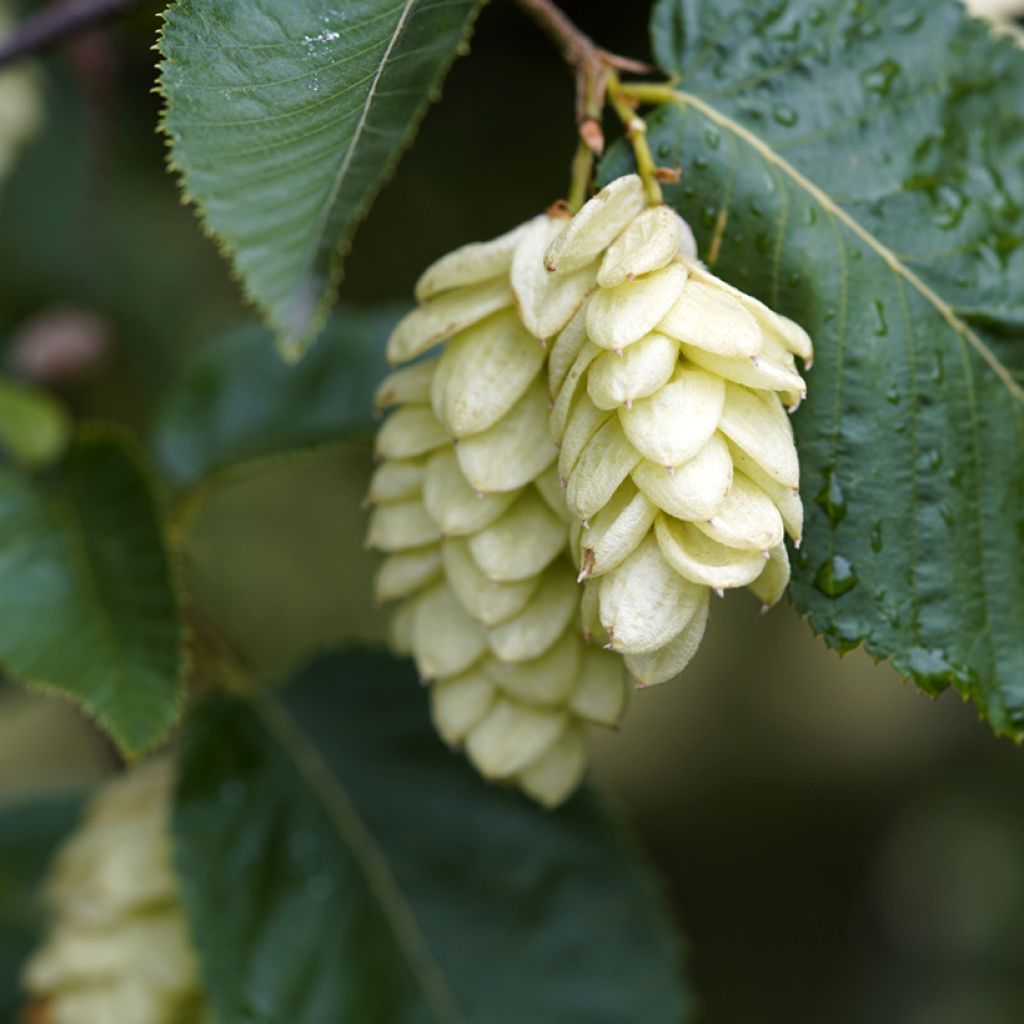

Ostrya carpinifolia
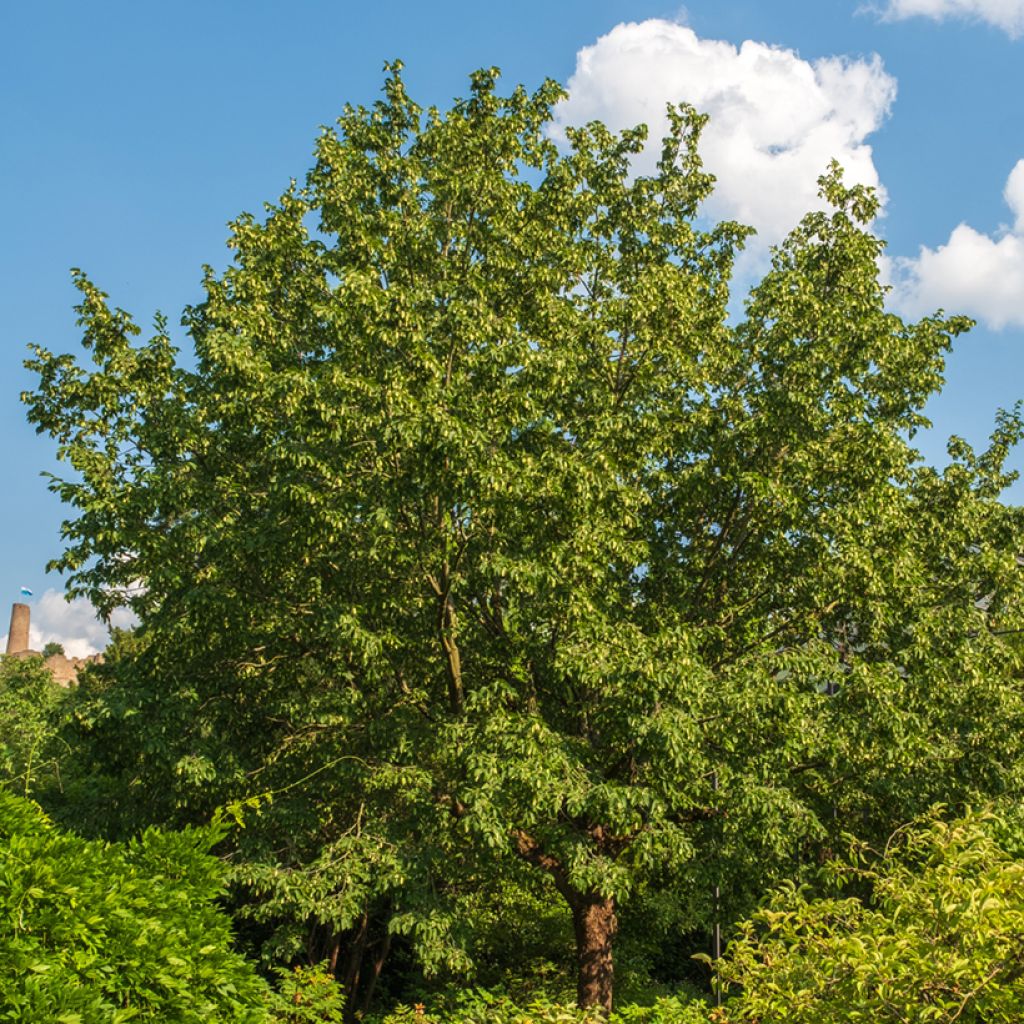

Ostrya carpinifolia
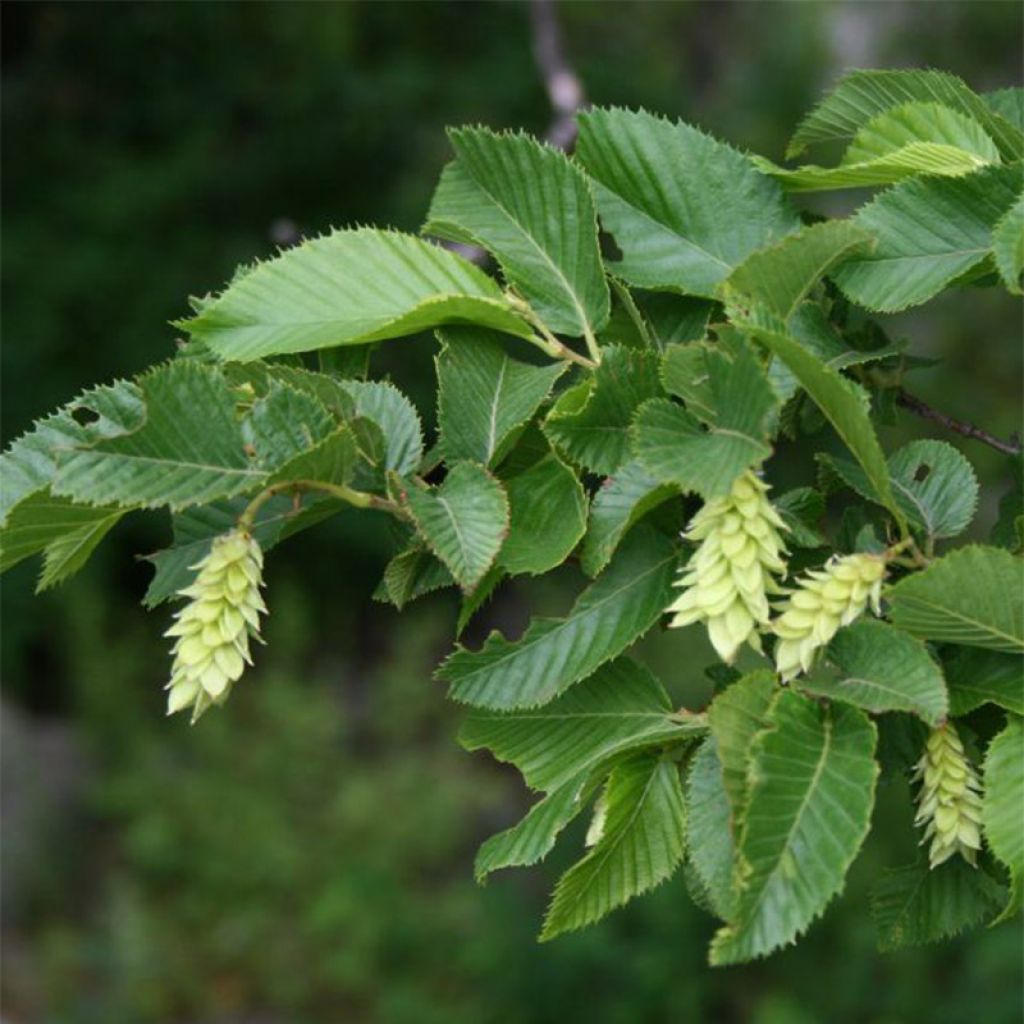

Ostrya carpinifolia
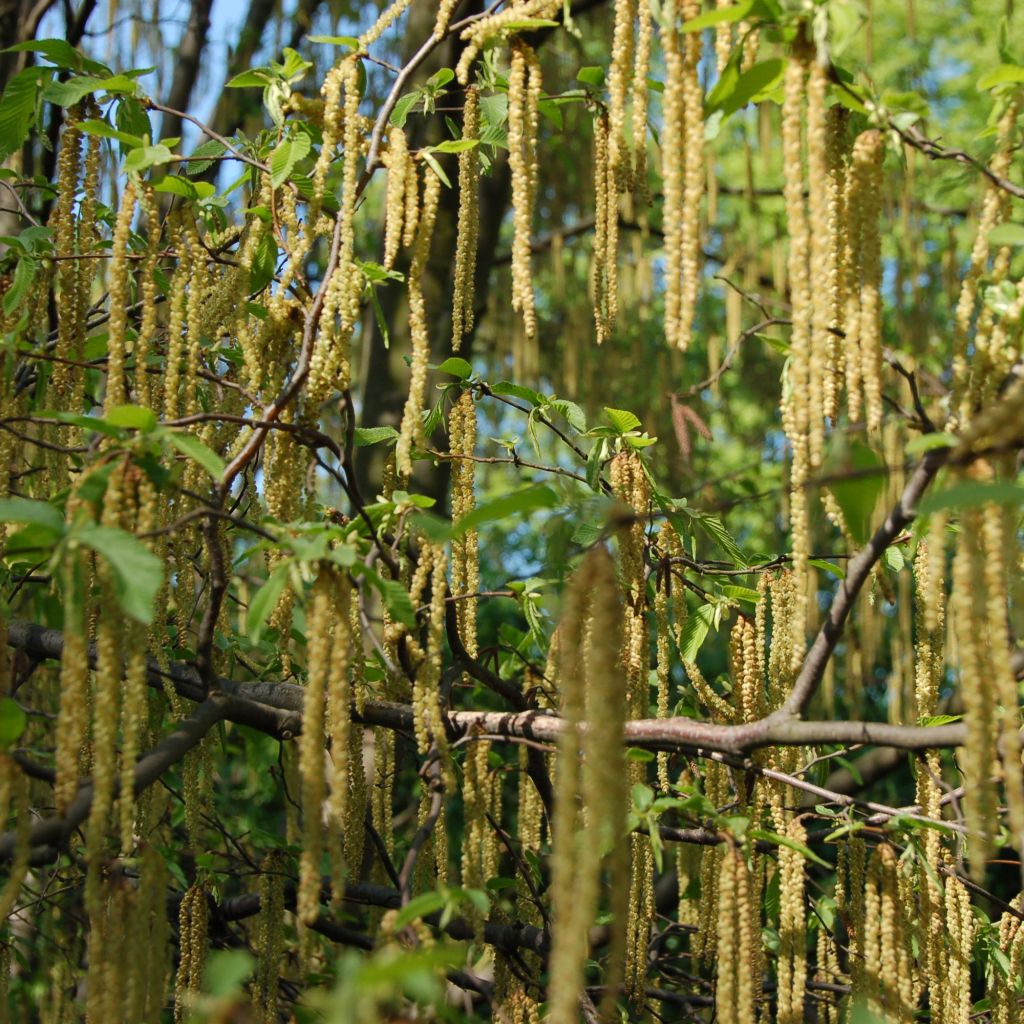

Ostrya carpinifolia
Ostrya carpinifolia
Ostrya carpinifolia
European Hop-hornbeam
Balanced young plant received in good condition. It's a shame that all the branches have been truncated to less than 5 cm (2in) from the trunk for transportation.
Isabelle, 14/10/2021
Order in the next for dispatch today!
Dispatch by letter from €3.90.
Delivery charge from €5.90 Oversize package delivery charge from €6.90.
More information
This item is not available in your country.
Schedule delivery date,
and select date in basket
This plant carries a 24 months recovery warranty
More information
We guarantee the quality of our plants for a full growing cycle, and will replace at our expense any plant that fails to recover under normal climatic and planting conditions.
From €5.90 for pickup delivery and €6.90 for home delivery
Express home delivery from €8.90.
Oversize package: home delivery by special carrier from €6.90 per order..
Express home delivery from €8.90.
Does this plant fit my garden?
Set up your Plantfit profile →
Description
Ostrya carpinifolia, also known as hop hornbeam or ostrier, is a tall deciduous shrub or small tree that is interesting in many ways. Its branches, covered with golden yellow foliage in autumn, stand out beautifully against a crevassed trunk covered with a beautiful silvery bark. Similar to common hornbeam in the shape of its leaves, it also stands out with its decorative fruits resembling those of hops. A very beautiful plant to be planted individually in a garden, or to create decorative alignments. Hardy and undemanding, it thrives in poor soils, even limestone and dry ones.
The hop hornbeam, also called ironwood in certain regions, belongs to the family of Betulaceae, just like birch and hornbeam. It is native to southwestern Europe and Turkey, where it thrives alongside Aleppo pine, maritime pine, and pubescent oak, usually on rocky slopes and in poor soil. The growing conditions, depending on the richness and water availability in the soil, will make it either a tall shrub of 3m (9ft 10in) or a small tree reaching 15m (49ft 2in). Under favourable conditions, its growth is rapid. Its habit is compact and erect, but its trunk, which often branches into several main branches, gives the crown a diffuse shape that becomes rounder with age. Its leaves, deciduous, alternate, and dentate, are slightly pubescent, especially on the lower surface. They have 12 to 15 pairs of very prominent veins. The flowers, appearing in April or May, are gathered in the form of catkins. The male flowers are pendulous catkins, while the female flowers are presented in the form of erect, terminal catkins, forming a pendant fruit 3 to 5cm (1.2 to 2in) long at maturity, yellow-orange to beige, resembling hop cones.
The hop hornbeam is highly appreciated in Mediterranean regions and on the French Riviera, although it has nothing exotic about it. In reality, it is planted in these regions for its great frugality and its ability to adapt to poor soils, while offering beautiful autumn colours and original bark. It can be associated in a grove or hedge with evergreen oak, Montpellier maple, Aleppo pine, or even Persian ironwood and garlic tree, to introduce beautiful autumn colours. It also makes a beautiful solitary subject in a large natural garden.
Ostrya carpinifolia in pictures
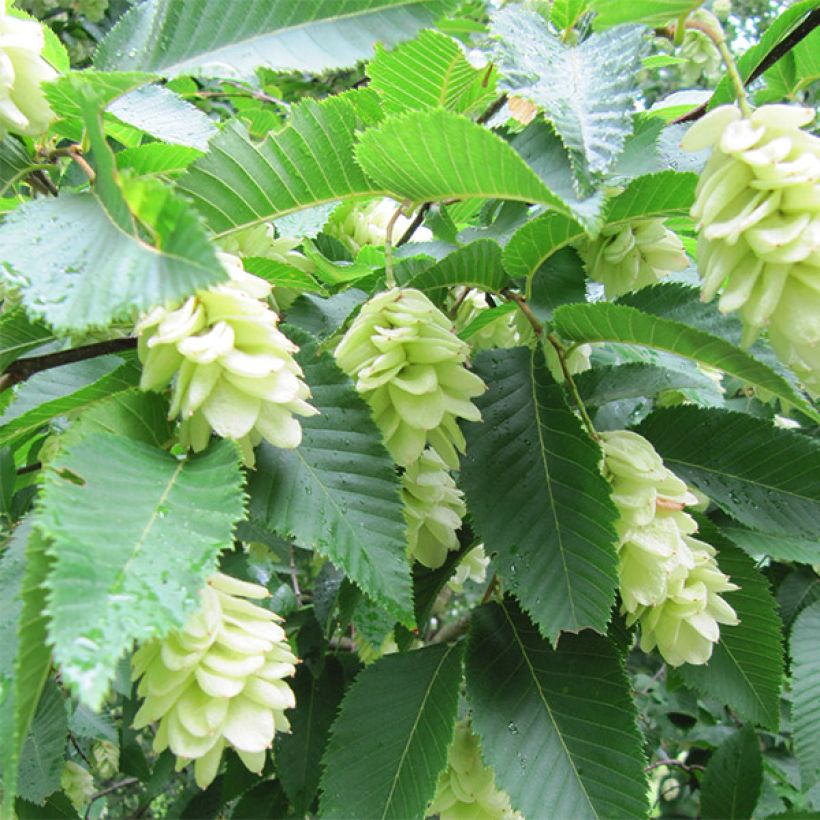

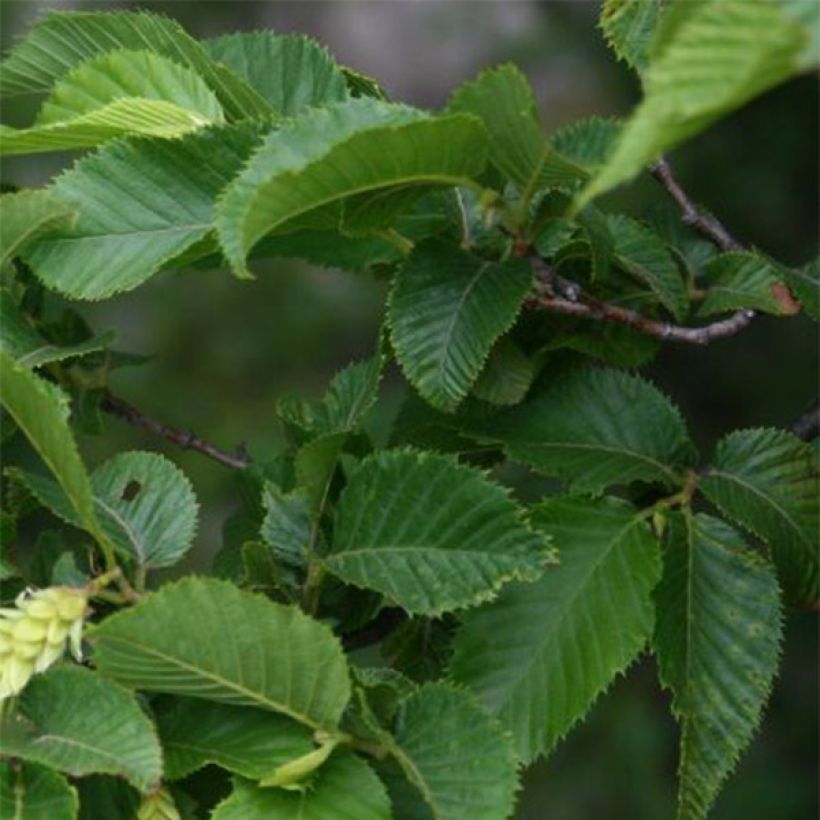

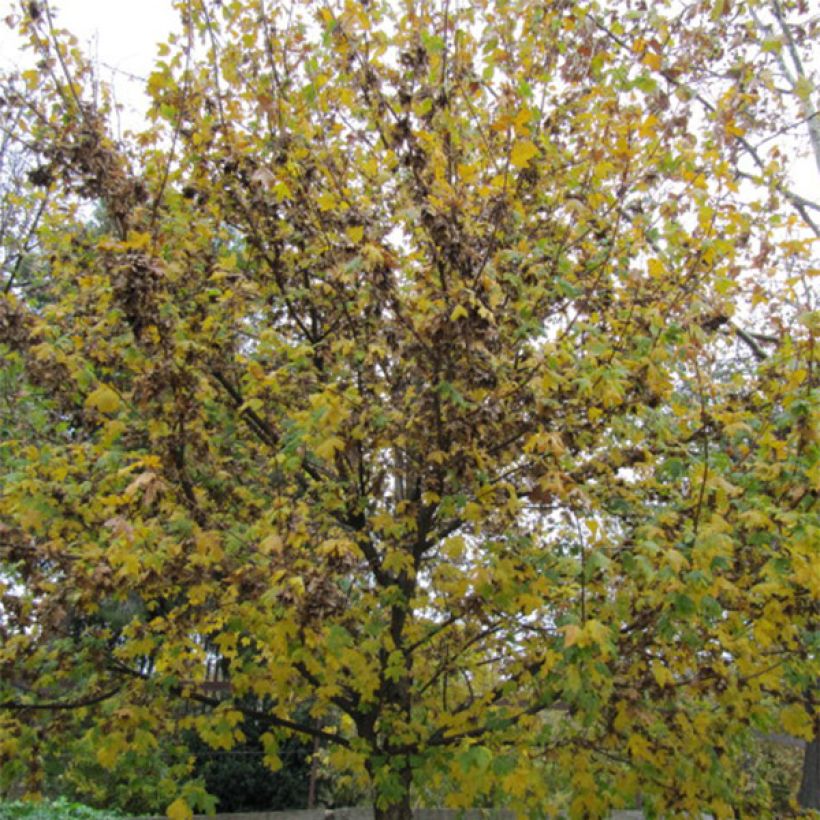

Plant habit
Flowering
Foliage
Botanical data
Ostrya
carpinifolia
Betulaceae
European Hop-hornbeam
Mediterranean
Planting and care
Ostrya carpinifolia, easy to grow and highly hardy (-20°C (-4 °F)), appreciates sunny or semi-shaded exposures, but can tolerate shady exposure in a warm climate. It grows in any well-drained soil, even poor, rocky, limestone and dry soil. However, it will thrive and grow faster in fertile and slightly moist soil.
Planting period
Intended location
Care
- , onOrder confirmed
Reply from on Promesse de fleurs
Haven't found what you were looking for?
Hardiness is the lowest winter temperature a plant can endure without suffering serious damage or even dying. However, hardiness is affected by location (a sheltered area, such as a patio), protection (winter cover) and soil type (hardiness is improved by well-drained soil).

Photo Sharing Terms & Conditions
In order to encourage gardeners to interact and share their experiences, Promesse de fleurs offers various media enabling content to be uploaded onto its Site - in particular via the ‘Photo sharing’ module.
The User agrees to refrain from:
- Posting any content that is illegal, prejudicial, insulting, racist, inciteful to hatred, revisionist, contrary to public decency, that infringes on privacy or on the privacy rights of third parties, in particular the publicity rights of persons and goods, intellectual property rights, or the right to privacy.
- Submitting content on behalf of a third party;
- Impersonate the identity of a third party and/or publish any personal information about a third party;
In general, the User undertakes to refrain from any unethical behaviour.
All Content (in particular text, comments, files, images, photos, videos, creative works, etc.), which may be subject to property or intellectual property rights, image or other private rights, shall remain the property of the User, subject to the limited rights granted by the terms of the licence granted by Promesse de fleurs as stated below. Users are at liberty to publish or not to publish such Content on the Site, notably via the ‘Photo Sharing’ facility, and accept that this Content shall be made public and freely accessible, notably on the Internet.
Users further acknowledge, undertake to have ,and guarantee that they hold all necessary rights and permissions to publish such material on the Site, in particular with regard to the legislation in force pertaining to any privacy, property, intellectual property, image, or contractual rights, or rights of any other nature. By publishing such Content on the Site, Users acknowledge accepting full liability as publishers of the Content within the meaning of the law, and grant Promesse de fleurs, free of charge, an inclusive, worldwide licence for the said Content for the entire duration of its publication, including all reproduction, representation, up/downloading, displaying, performing, transmission, and storage rights.
Users also grant permission for their name to be linked to the Content and accept that this link may not always be made available.
By engaging in posting material, Users consent to their Content becoming automatically accessible on the Internet, in particular on other sites and/or blogs and/or web pages of the Promesse de fleurs site, including in particular social pages and the Promesse de fleurs catalogue.
Users may secure the removal of entrusted content free of charge by issuing a simple request via our contact form.
The flowering period indicated on our website applies to countries and regions located in USDA zone 8 (France, the United Kingdom, Ireland, the Netherlands, etc.)
It will vary according to where you live:
- In zones 9 to 10 (Italy, Spain, Greece, etc.), flowering will occur about 2 to 4 weeks earlier.
- In zones 6 to 7 (Germany, Poland, Slovenia, and lower mountainous regions), flowering will be delayed by 2 to 3 weeks.
- In zone 5 (Central Europe, Scandinavia), blooming will be delayed by 3 to 5 weeks.
In temperate climates, pruning of spring-flowering shrubs (forsythia, spireas, etc.) should be done just after flowering.
Pruning of summer-flowering shrubs (Indian Lilac, Perovskia, etc.) can be done in winter or spring.
In cold regions as well as with frost-sensitive plants, avoid pruning too early when severe frosts may still occur.
The planting period indicated on our website applies to countries and regions located in USDA zone 8 (France, United Kingdom, Ireland, Netherlands).
It will vary according to where you live:
- In Mediterranean zones (Marseille, Madrid, Milan, etc.), autumn and winter are the best planting periods.
- In continental zones (Strasbourg, Munich, Vienna, etc.), delay planting by 2 to 3 weeks in spring and bring it forward by 2 to 4 weeks in autumn.
- In mountainous regions (the Alps, Pyrenees, Carpathians, etc.), it is best to plant in late spring (May-June) or late summer (August-September).
The harvesting period indicated on our website applies to countries and regions in USDA zone 8 (France, England, Ireland, the Netherlands).
In colder areas (Scandinavia, Poland, Austria...) fruit and vegetable harvests are likely to be delayed by 3-4 weeks.
In warmer areas (Italy, Spain, Greece, etc.), harvesting will probably take place earlier, depending on weather conditions.
The sowing periods indicated on our website apply to countries and regions within USDA Zone 8 (France, UK, Ireland, Netherlands).
In colder areas (Scandinavia, Poland, Austria...), delay any outdoor sowing by 3-4 weeks, or sow under glass.
In warmer climes (Italy, Spain, Greece, etc.), bring outdoor sowing forward by a few weeks.